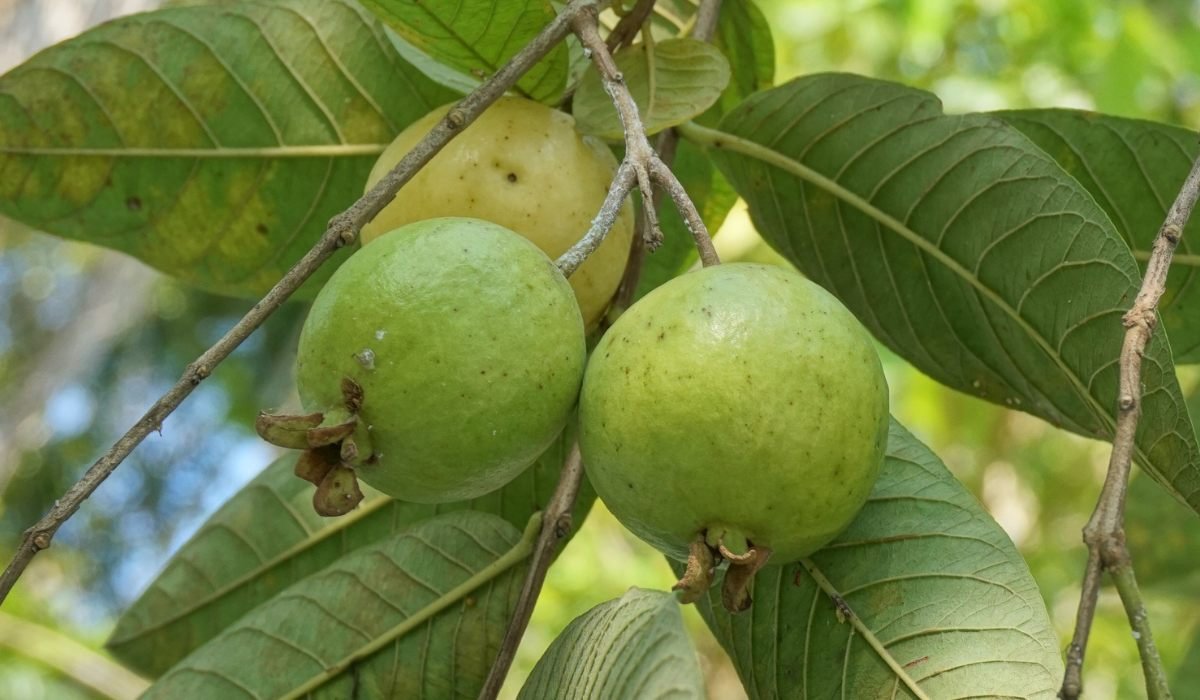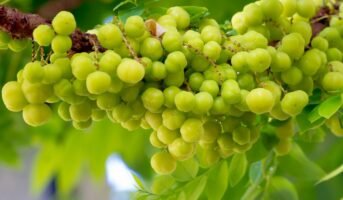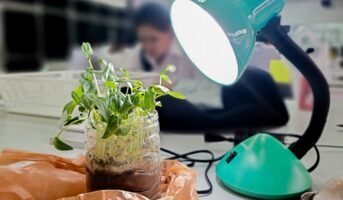For many people, growing fruit at home is a family-friendly hobby, something for each age group to enjoy. You can grow fruits even in one of those miniature gardens. All you need as a home farmer to get the right fruit produce is to pick the right approach. If you have been growing plants, you know that watching your plant develop from a young sapling into a mature, fruit-bearing plant is indescribable. It is similar to raising a child. This article shows five fruits that are simple to grow.
see also: all about cape gooseberry
Fruit plants: Quick facts
| Botanical name | Fruit name | Fruit seasoning time | Toxicity | Soil type |
| Psidium guajava | Guava | 1. February to March (early spring)
2. August to October (autumn) |
Guava leaves may be toxic to pets | Shallow, medium black, and alkaline soil |
| Ficus carica | Fig | 1. May to June (Summer)
2. October to November (early winter) |
Ficin in fig plants can cause some skin irritations | Deep, non-alkaline clayey loam soil. |
| Selenicereus undatus | Dragon fruit | 1. June through September (summer)
2. November through February (winter) |
Non-toxic to humans and pets | Sandy loam with organic matter |
| Phyllanthus emblica | Gooseberry | May to September (summer) | Alkaloids in leaves of gooseberry are toxic to pets if consumed | Moist, well-drained soil |
| Prunus domestica | Plums | July through October (autumn) | Hydrogen cyanide in pits may cause toxicity to pets if consumed | sandy, loamy and drained soil |
See Also: What is peat? Why is it important in gardening?
1) Guava plant
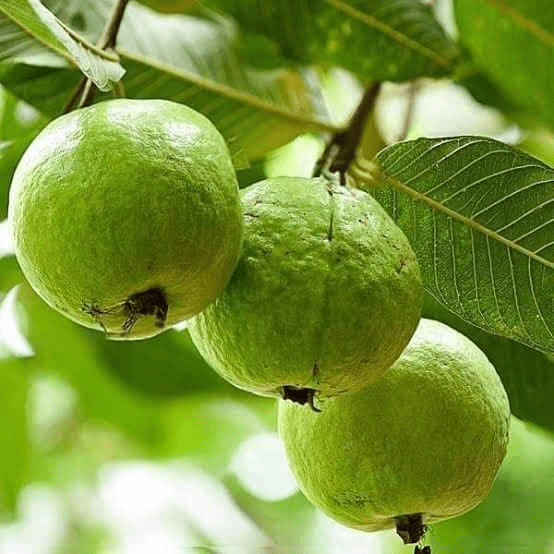
Source: Pinterest
Guavas have slender trunks with green to reddish-brown bark. The fruit plant is a huge shrub with thick, oval, glossy green leaves. The fruits can reach a diameter of up to 7.6 cm and range in shape from round to pears. Their pulp is filled with numerous tiny hard seeds. The majority of guavas start as green fruits, having slightly rough skin. Eventually, they ripen to a yellow or nearly crimson colour.
See also: All about India’s National Tree- Banyan
Growing tips:
- Limited seed starter mixture is to cover the guava seed.
- Place the potted guava plant in a warm location.
- As soon as the soil’s top feels dry, spray it to retain moisture.
- Between two and eight weeks are needed for the seed to germinate.
- Usually, three to four years after planting, guava trees start producing fruit.
- Between 23 and 36 kg or more produce can be harvested annually from each tree.
Maintaining healthy plants:
- Before planting, simmer the seedlings for five minutes to loosen their rough exterior and promote sprouting.
- With the support of organic manure, the topsoil around the guava plant’s mattress can be kept at a constant warmth.
- When the guava plant is immature, fertilise it every one to two months; as it grows older, fertilise it three to four times a year.
- After sowing, give trees a lot of water throughout the fruit- and blooming-bearing seasons.
Health benefits:
- It aids in easing uncomfortable menstrual symptoms.
- Tea made from guava leaves can decrease triglycerides and bad cholesterol in the body.
- It improves intestinal health as well as heart health.
- Oral ulcers and irritated gums can be treated with guava leaf extract.
- The bark’s antimicrobial characteristics make it effective for treating skin conditions.
- It aids in both weight loss and blood sugar control.
Read about Prunus Armeniaca
2) Fig plant
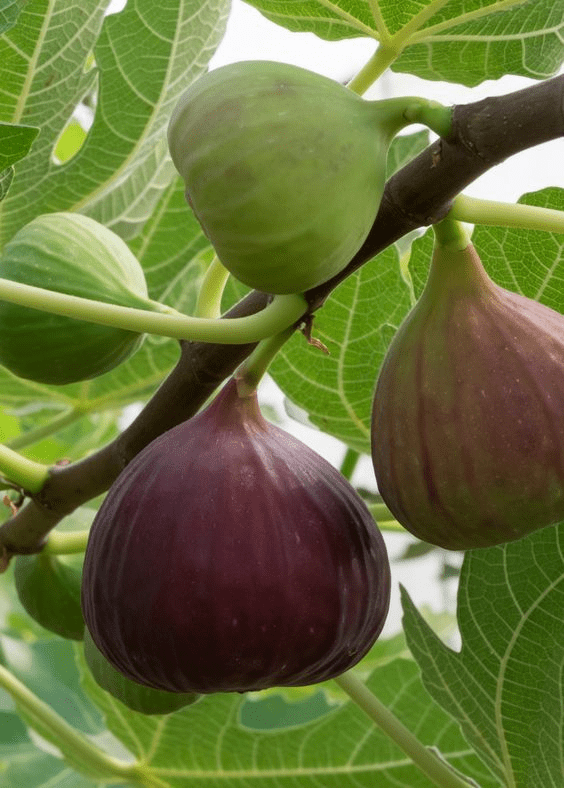
Source: Pinterest
The fig tree is a perennial shrub that can grow from 1 m to 10 m with broad, tough, deciduous leaflets that are strongly lobed or occasionally practically whole. Because fig trees adore warmth and sunlight, place them next to a bright, sunny south or west-facing wall. Figs are worth the effort it takes to grow them, and their lovely, fragrant foliage is a perfect complement to gardening as well.
Growing tips:
- To prevent their roots from spreading too far into the earth, place them in planters or employ debris or buried concrete slabs.
- An annual application of well-rotted manure or fertiliser as a mulch will maintain the soil rich and control weed growth around the tree trunk.
- Make careful to hydrate the tree gently and add a high-nitrogen feed every four weeks in the summer and the spring.
- For fig trees grown outside, grow the bush in full sun in the springtime or early autumn.
Maintenance:
- Feed your plant some mixed manure, such as 10-10-10 (NPK), as directed on the container if it looks to be holding back on spring vegetative growth.
- When fruit is developing on your bush, treat it once a week with a nutrient solution.
- For the delicious fig to thrive and produce fruit, it needs roughly 100 hours of cool weather.
- Do not pluck your figs from the fig tree until they are fully ripe.
Health benefits:
- The fibre content in figs is substantial, which can aid in flushing the body with extra salt.
- In addition to protecting your heart, it facilitates digestion and aids in weight loss.
- It helps in curing reproductive issues, constipation, and joint problems.
- Bone density can be increased by the calcium and potassium content in figs.
- Prebiotics included in them are a great source for enhancing gut health in general.
known about: Summer Fruits In India
3) Dragon fruit plant
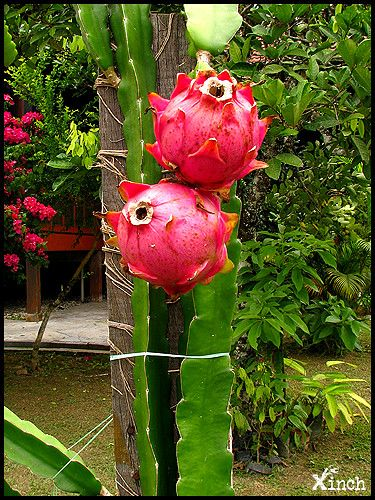
Source: Pinterest
Fast-growing fruit plants like dragon fruit can continue to produce well after 20 years. A big, climbing, prickly plant with thick, towering branches, the cactus can reach heights of up to 30 feet. Bright red, purple, or yellow types of this fruit have strikingly attractive skin with green scales. The interior is gently sweet-tasting or occasionally has a faintly sour flavour.
Growing tips:
- Select a warm spot in your ledge that receives at least six hours of direct sunlight each day to grow dragon fruit plants.
- Thin your seedlings of dragon fruit as they develop so that each new plant has space.
- For the plants to be better supported as it matures, examine the staking.
- Trim some of the older branches from time to time to preserve them under the limit and provide room for vegetative growth to sprout.
- Don’t pluck until fully ripe.
Maintenance:
- Hold the soil uniformly moist and avoid letting it wilt out altogether since dragon fruit requires damp soil to imitate their equatorial home.
- Pruning back any deceased, rotting, ill, or crowded twigs will maintain your plant healthy and allow it to grow appropriately on its support system.
- If you want to cultivate a dragon fruit from such a clipping, be careful not to take excessive amounts from the original plant since this will limit its growth and endanger its health.
- If a crop is provided with far too much watering, base damage can also happen.
Benefits:
- The high fibre content in this fruit helps diabetics avoid blood sugar spikes.
- It promotes RBC production, which boosts the circulation of oxygenated blood to the cerebral cortex.
- The prebiotic impact of dragon fruit on the body improves digestion and gut health.
- When included in a balanced diet, dragon fruit could help you shed pounds because of its fat-free and low-carb levels.
4) Gooseberry
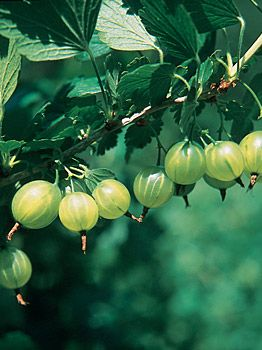
Source: Pinterest
The green blossoms produced by gooseberry plants are produced in solitary or in isolated pockets of two or three. In chilly, humid regions with moist clay soil, they flourish. The round, usually hairy or prickly-surfaced berries come in white, red, yellow, or greenish hues. Gooseberries have a height of around 25 cm. In India, where it is native, it is used in a variety of dishes and herbal medicines.
How to grow:
- Initially, don’t allow the plant to bloom or bear fruit. Any springtime blooms you see should be rubbed or plucked.
- After a few months, you’ll have a little harvest; a complete crop should be received thereafter.
- 1 inch of water each week should be used to thoroughly water plants.
- Over-nitrogenating the plants might result in vegetative growth at the price of fruit. Therefore you would like to prevent doing this.
- To preserve moisture and stop weeds from sprouting, you should spread two to three inches of compost over the area.
Maintenance:
- Existing shrubs require very little supplemental irrigation in soils that retain humidity.
- To provide plants with a huge leg up on the upcoming growing season, use organic, calibrated manure after each winter.
- After that, pull up any weeds near the root zone before adding additional mulch at least an inch deep.
- Early in the spring, fertilise gooseberry plants with potash sulphate and a thick layer of soil or well-rotted dung mulch.
Benefits:
- It encourages hair development and lessens hair loss.
- It aids in preventing cell alterations that fuel the formation of tumours and the onset of cancer.
- Gooseberry extract helps the mitochondria of eye cells by preventing age-related macular degeneration.
- Amla juice is supposed to cleanse the skin and lighten pigmentation whether applied topically or consumed.
- Numerous qualities of gooseberries may help regulate blood sugar.
- Amla paste can aid in controlling acne scars, fine wrinkles, and breakouts.
5) Plum fruit plant
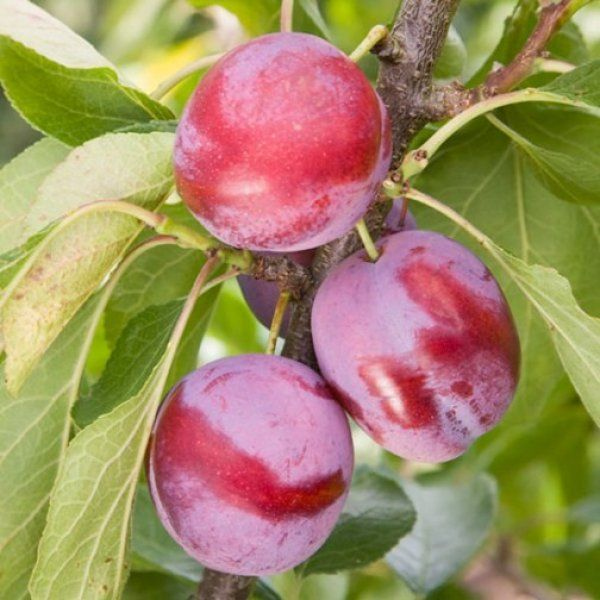
Source: Pinterest
For novice and experienced landscapers alike, plum plants make excellent fruit trees. They grow abundant crops of excellent dried fruits, are cold-tolerant, and demand little attention once they are planted. Although green-yellow plums are also available, the most common kind has a bright purple-red exterior and yellow interior pulp.
How to grow:
- When placing a tree for the initial weeks following sowing, feed the shrub plenty of water.
- If you’re growing a bare-root shrub, soak the root systems in a water container for up to six hours.
- Provide your plum branch with regular weekly irrigation on a gentle cycle during the growth period for the initial year or two.
- American mix and European plums should be picked when their skin appears flexible and when they twist readily away from the stem.
Maintenance tips:
- Pick a site for your planting that receives full daylight, or at the very least 6 to 8 hours each day of direct sunshine.
- The frost might harm your trees, so stay away from planting in low regions where it might accumulate.
- However, you must eliminate the topsoil in the late autumn to prevent pests from using it as a winter habitat.
- To get rid of any insects in the earth, you could also softly plough the soil surrounding your plants in late spring.
Benefits:
- Plums’ high polyphenol content may lessen the effects of ageing on cognitive function.
- Plums are well known for being good antioxidants and contain a high vitamin C content.
- Taking plums encourages the body to produce more haemoglobin and improves blood circulation across the body.
- Their antioxidants suppress the chronic inflammation that causes heart problems.
- Plums have anticancer substances that could shield the body from cancer.
FAQs:
Is guava bad to grow in a backyard garden?
No. Planting a guava tree in your home garden is not related to bad Vastu practice in any way, so there’s nothing wrong with doing so.
Is drinking pear juice advantageous for pregnant women?
Yes. Folic acid, which is present in pears, may be advantageous during pregnancy.
Can fruit trees be grown in pots?
Yes! The tiny versions of fruit trees, such as pears, plums, and apricots, can survive for several years when grown in a planter with the right care.
Housing News Desk is the news desk of leading online real estate portal, Housing.com. Housing News Desk focuses on a variety of topics such as real estate laws, taxes, current news, property trends, home loans, rentals, décor, green homes, home improvement, etc. The main objective of the news desk, is to cover the real estate sector from the perspective of providing information that is useful to the end-user.
Facebook: https://www.facebook.com/housing.com/
Twitter: https://twitter.com/Housing
Email: [email protected]
